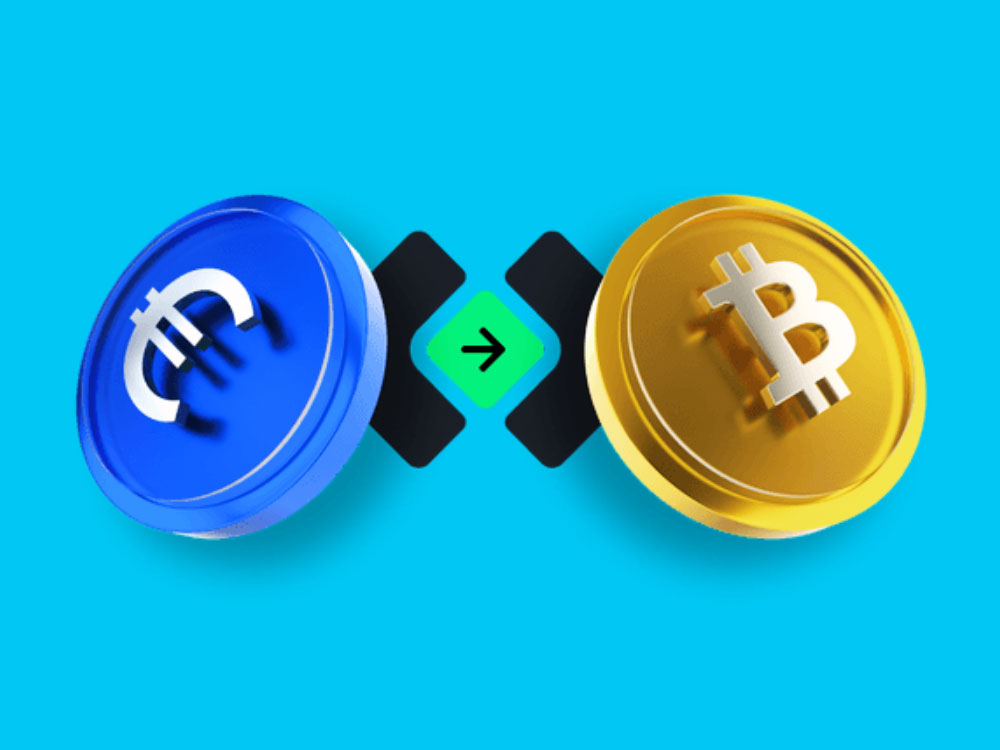Serbia is quickly becoming one of Europe’s most talked-about talent hubs for remote developers. With a deep pool of skilled engineers, strong technical education, and competitive rates, international companies are increasingly hiring Serbian developers for remote roles. But getting paid across borders still sucks as traditional banking rails are slow, expensive, and unreliable.
This is where stablecoin payments in Serbia are changing the game. Instead of waiting on sluggish bank transfers or dealing with outdated remittance systems, more remote developers are turning to crypto payments. Specifically, USDC and USDT in Serbia are emerging as the preferred currencies for fast, stable, cross-border transactions.
Serbian freelancers, developer teams, and global employers alike are realizing the benefits of crypto payments for Serbian freelancers, especially when it comes to paying developers with stablecoins.
This blog talks about stablecoin payments in Serbia, crypto payments for developers, USDC and USDT in Serbia, remote work crypto payments, Serbia crypto salaries, and how platforms like TransFi are driving the crypto adoption in the Serbian tech sector.
Stablecoin Payments in Serbia
Serbia’s financial infrastructure is decent but it’s not built for global, modern, remote-first work. Traditional banks here still rely on slow systems, international transfers can take days, conversion fees are high, and the local dinar (RSD) isn't a great option for savings, especially when inflation is hovering and you’re working with clients who pay in dollars.
Stablecoin payments in Serbia solve two big problems at once: speed and holding value. Stablecoins like USDC and USDT are pegged to the US dollar, meaning one USDC is basically one dollar, always. They’re borderless too. It doesn’t matter if your client is in Berlin, New York, or Singapore as money moves fast across borders without banks slowing things down. And the fees? Way lower. Sending USDC on supported blockchains costs just a few cents, unlike those €30-plus charges you get with international wire transfers.
So while traditional finance is still stuck in the past, stablecoin payroll for developers in the Balkans is becoming the smarter, faster alternative. Platforms like TransFi make it even smoother. Their infrastructure supports 40+ currencies and 250+ local payment methods, across 100+ countries. Serbian devs using TransFi can receive stablecoins and cash out in RSD, EUR, or even keep their balance in digital assets if they prefer.
Crypto Payments for Developers
If you're a developer in Serbia working remotely for international clients, odds are you've already run into some payment headache. Maybe it was a wire that got stuck in processing. Maybe it was a PayPal freeze. Or maybe you just watched a big chunk of your earnings disappear in FX conversion.
This is exactly why crypto payments for developers are gaining serious ground. They offer something that traditional systems can’t: direct, fast, and affordable access to your money on your terms.
Here’s what’s actually happening:
- Developers are invoicing clients in USDC and USDT in Serbia.
- Payments arrive in under 10 minutes, not days.
- With platforms like TransFi, those stablecoins can be converted to local currency or held in crypto, whichever the dev prefers.
- No hidden fees, no banking bureaucracy, and no "international processing delays".
It’s easy to see why paying developers with stablecoins is catching on, not just with freelancers but with tech firms and DAOs hiring across Eastern Europe.
USDC and USDT in Serbia
When we talk about stablecoins in Serbia, we’re really talking about two major players: USDC and USDT. These are the digital equivalents of the US dollar, and they’re what most remote developers in Serbia are using to get paid when crypto is on the table.
Now, both tokens do the same basic thing which is giving you price stability without needing a bank. But the way they’re used and how they fit into the local picture is where things get interesting.
USDT (Tether) has broader adoption across global exchanges. It’s everywhere. It’s liquid. And because it runs on multiple blockchains like Tron and Ethereum, it gives users flexibility. Many Serbian freelancers and small agencies prefer it for exactly that reason: it’s familiar, fast, and cheap to send. On the other hand, USDC is backed by regulated financial institutions in the US and tends to be favored by bigger companies or DAOs that care more about transparency. Basically it is seen as the cleaner, more compliant option.
USDC and USDT in Serbia are real, regulated instruments powering remote work crypto payments, Serbia crypto salaries, and blockchain payroll in Serbia, especially when supported by global platforms like TransFi that integrate compliance, smart routing, and global fiat/crypto connectivity.
Also read about: Stablecoin Payments in Austria: SMEs Using Stablecoins for B2B Efficiency
Remote Work Crypto Payments
Getting paid as a remote developer in Serbia isn’t always smooth. If your client is in San Francisco, you're in Belgrade, and your bank is somewhere in between, it can get messy fast with payment delays, sky-high wire fees, and exchange rate surprises. This is exactly where remote work crypto payments are winning. They cut straight through the mess and get value moving directly from client to developer in a way that is fast, traceable, and often for a fraction of the cost. With stablecoin payments in Serbia, time zones don’t matter as payments land 24/7, transactions settle in minutes, fees are transparent and know exactly what you’re getting and how much it costs to move. Moreover, remote work crypto payments allow you to stay in control with no frozen accounts or bounced transfers.
Developers in Serbia are invoicing in USDC and USDT, and they’re receiving full payments in their crypto wallets within minutes. And with TransFi, it gets even better. Their AI-powered routing chooses the fastest and cheapest path for every transaction. So whether your client is in Colombia or Indonesia, the funds reach you in the most efficient way possible.
Serbia Crypto Salaries
Let’s say you’re a backend developer in Serbia, working remotely for a company based in Berlin. You’re billing €4,000 a month. If you get paid through traditional banking, you’re losing 2–5% on FX and wire fees. That’s €80–€200 gone. Every single month. Over a year, you’re looking at over €2,000 lost to friction. But if the same company pays you in USDC via TransFi, and you receive the full amount in your wallet in minutes. This is why Serbia crypto salaries are becoming more common. Not because people are chasing some crypto dream. Because they’re trying to keep more of what they earn.
Here’s what’s driving the shift:
- Stablecoin payroll in Serbia makes remote hiring easier. Companies don’t need to register locally or use expensive international payroll services.
- Freelance crypto payments in Serbia give contractors more flexibility with no more explaining foreign payments to local banks.
- Using stablecoins for remote tech salaries in Serbia helps avoid RSD volatility and keep value in stronger currencies.
- Crypto payments for developers are fast, legal, and increasingly trusted, especially when routed through compliant platforms like TransFi.
It’s also worth noting that Serbian tax law allows for crypto to be treated as digital property, meaning there’s a clear legal path for declaring income. Crypto salaries in Serbia are becoming a smart, strategic way to get paid globally, especially for developers who want the flexibility of global work without the friction of outdated banking systems.
Conclusion
Stablecoins aren’t the future of payments in Serbia, developers are using them right now to get paid faster, with fewer fees, and on their own terms. Whether it’s USDC or USDT, stablecoins are solving real problems for remote workers who’ve grown tired of slow banks, bad exchange rates, and unpredictable payout delays.
Platforms like TransFi are at the heart of this shift. They don’t just support stablecoin payments in Serbia, but make them viable at scale. With access to 250+ local payout methods, 40+ currencies, and 100+ countries, TransFi connects the crypto world to the fiat one. AI-driven smart routing ensures that every payment is fast, cheap, and accurate; the platform’s enterprise-grade compliance makes it the best for blockchain payroll in Serbia.
If you’re serious about paying developers with stablecoins, or if you’re a freelancer tired of losing money to broken systems, platforms like TransFi offer a clear, compliant, and cost-effective way forward.
FAQs
1. How do remote developers in Serbia get paid in USDC?
Most remote developers receive USDC payments through wallets connected to platforms like TransFi. Their clients send stablecoins via these platforms, which handle compliance and conversion. Developers can keep funds in crypto or cash out to local currency quickly and cheaply.
2. What is the best way to integrate stablecoin payroll for developers in the Balkans?
Using a payment platform like TransFi is the best way to integrate stablecoin payroll for developers in the Balkans. It supports multiple currencies and assets, offers AI-powered routing for best fees and speed, and ensures global compliance.
3. What are the benefits of crypto payments for Serbian freelancers?
The benefits of crypto payments for Serbian freelancers include faster payouts, lower fees, transparency, and greater control over when and how to convert their earnings.
4. Why is using stablecoins for remote tech salaries in Serbia beneficial?
Stablecoins like USDC and USDT provide dollar-pegged stability without relying on banks. Using stablecoins for remote tech salaries in Serbia is beneficial because they settle quickly, have low fees, and protect workers from local currency volatility.
5. What is the comparison of USDT vs USDC for developer payouts in Serbia?
USDT is more widely used and liquid, with faster transactions on networks like Tron, making it attractive for freelancers. USDC offers more regulatory transparency and compliance, often preferred by companies. Both work well, but choice depends on whether speed/liquidity or compliance/trust is prioritized.
Table of Contents
Suggested Article
Explore our products

Make global payments at the speed of a click

Accept payments, remove borders.

Unlock Seamless Digital Currency Transactions Anywhere









.png)














